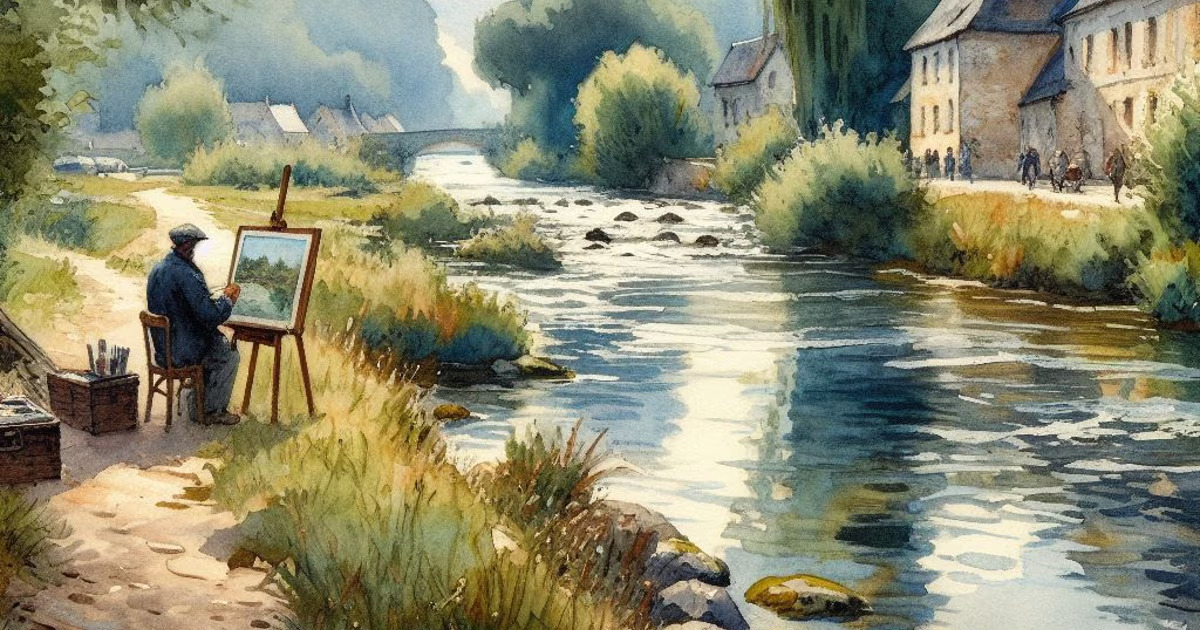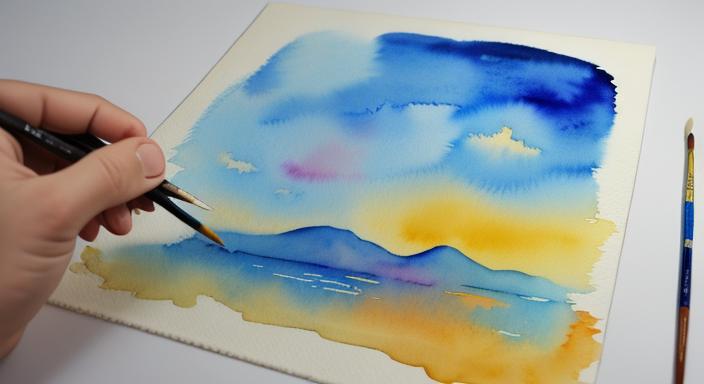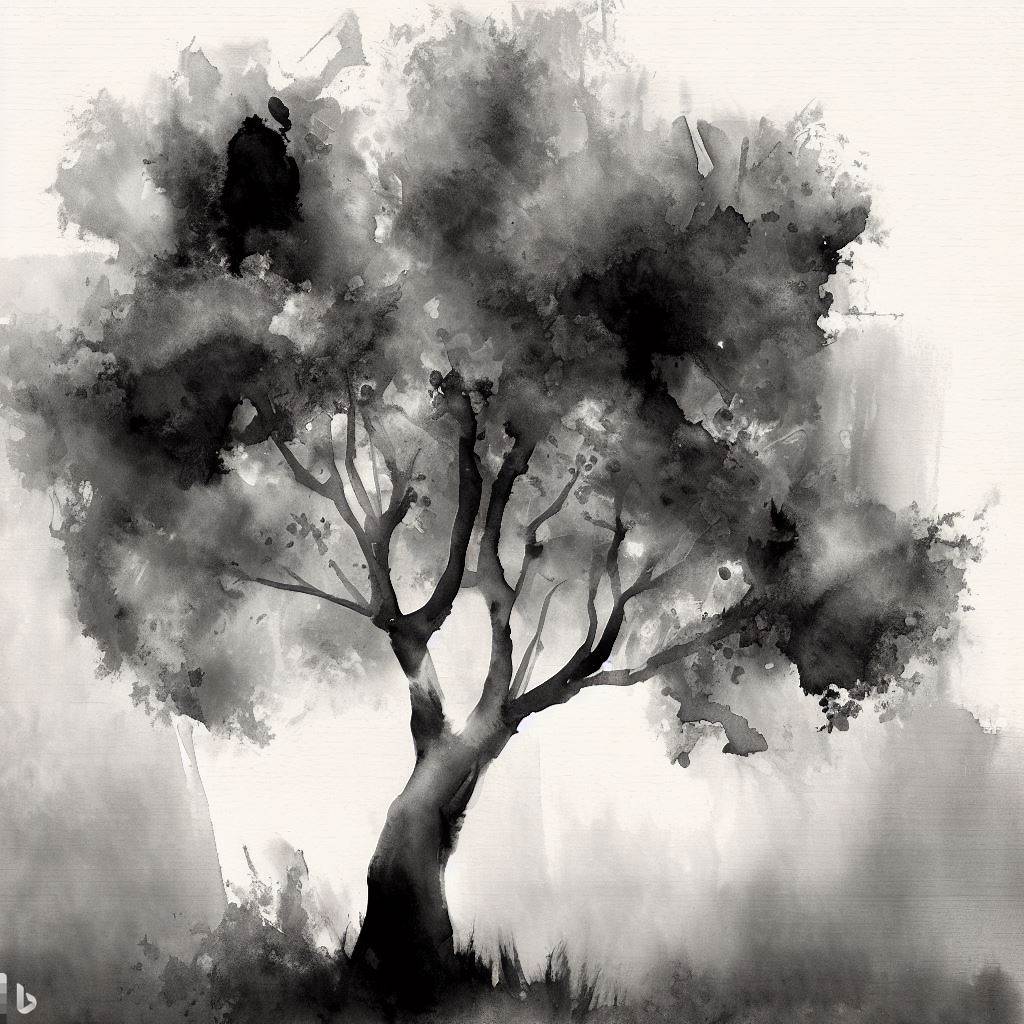In the world of art, there are countless mediums and techniques that artists can explore to express their creativity. One such beautiful combination is ink and watercolor. The marriage of these two mediums creates a harmonious and captivating effect on the canvas. In this article, we will delve into the enchanting world of ink and watercolor, exploring their unique properties, techniques, and the breathtaking results they can achieve when used together. Join us on this artistic journey as we uncover the secrets of why ink and watercolor truly are a match made in heaven.
The Beauty of Ink and Watercolor
Ink and watercolor, when combined, have the power to bring out the best in each other. The delicate transparency of watercolor blends seamlessly with the bold lines and intense pigments of ink, resulting in artwork that is both vibrant and detailed. The contrast between the fluidity of watercolor and the precision of ink creates a visual feast for the eyes. The interplay between these two mediums allows artists to experiment with various effects, from soft washes to intricate details, making it an ideal choice for artists looking to create dynamic and expressive artwork.
The Versatility of Ink and Watercolor
One of the greatest advantages of using ink and watercolor together is their versatility. Whether you want to create a realistic landscape, a whimsical illustration, or an abstract composition, ink and watercolor offer endless possibilities. The fluid nature of watercolor allows for the creation of smooth gradients and soft blends, while ink provides the structure and definition needed for intricate details. This versatility makes ink and watercolor suitable for artists of all skill levels and artistic styles.
Techniques for Using Ink and Watercolor
Wet-on-Wet Technique: Creating Ethereal Blends
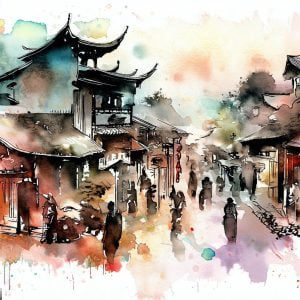
The wet-on-wet technique is a popular method when working with ink and watercolor. It involves wetting the paper before applying the ink and watercolor, allowing the colors to blend and bleed into each other organically. This technique is perfect for creating ethereal and dreamy effects, especially when painting landscapes or abstract compositions. The colors seamlessly merge, creating soft transitions and captivating textures.
Dry Brush Technique: Adding Texture and Detail
When artists want to add texture and detail to their ink and watercolor artwork, the dry brush technique comes into play. This technique involves using a relatively dry brush to apply paint on a dry or slightly damp surface. By dragging the brush lightly over the textured paper, the ink and watercolor pigments catch the raised areas, creating a sense of depth and texture. This technique is particularly effective when depicting objects with intricate patterns or rough surfaces.
Ink Outlining: Defining Form and Adding Contrast
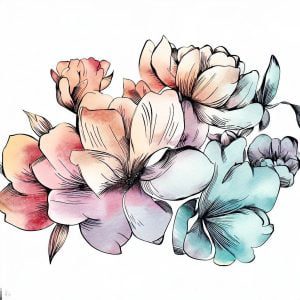
Ink outlining is a technique commonly used in conjunction with watercolor to define the form and add contrast to a painting. By using waterproof ink, artists can outline the shapes and contours of their subject, enhancing its visual impact. The bold lines of ink create a clear distinction between different elements within the artwork, adding depth and dimension. This technique is especially useful when painting detailed subjects such as botanical illustrations or architectural sketches.
Ink and Watercolor Wash: Capturing Atmosphere and Mood
Combining ink and watercolor washes is an excellent way to capture the atmosphere and mood in your artwork. By applying a light wash of watercolor as the base layer and then adding ink on top, artists can create a sense of depth and drama. The watercolor wash sets the overall tone and mood, while the ink adds definition and intensity. This technique is often used in creating illustrations and narrative artworks, as it can evoke a wide range of emotions and engage the viewer on a deeper level.
Splattering and Dripping: Embracing Spontaneity and Texture
If you’re looking to infuse your ink and watercolor artwork with a touch of spontaneity and texture, splattering and dripping techniques are your allies. By loading your brush with ink or watercolor and flicking it onto the paper, you can create splatters and drips that add an element of surprise and dynamism to your piece. This technique works particularly well for abstract or expressive artworks, as it brings an element of unpredictability and movement to the composition.
Collage and Mixed Media: Adding Depth and Dimension
Ink and watercolor can also be combined with other mediums and materials to create mixed-media artwork. By incorporating elements such as torn paper, fabric, or even found objects, artists can add depth and dimension to their creations. The ink and watercolor act as a unifying force, seamlessly integrating the different elements and textures. This technique opens up a world of possibilities for artists, allowing them to experiment and push the boundaries of traditional art forms.
Choosing the Right Ink for Watercolor Painting
Choosing the right ink for watercolor painting is crucial to achieve the desired results. Here are some tips to help you choose the right ink for your watercolor painting:
- Look for waterproof ink: The most important factor in choosing ink for watercolor is that it’s waterproof. This means that it won’t smudge or bleed when you apply watercolor to it. High-quality waterproof ink won’t transfer color or bleed.
- Check the label: When choosing ink for watercolor, make sure it is labeled waterproof or water-resistant, and not water-soluble. Water-soluble ink will dissolve when it comes into contact with water, which can ruin your painting.
- Choose the right pen: If you plan to use a fountain pen, make sure to choose one that is compatible with waterproof ink. Some fountain pens are not designed to work with waterproof ink, so it’s important to check before you buy.
- Consider the color: Black ink is the most common choice for watercolor painting, but you can also experiment with other colors. Just make sure to choose an ink that is compatible with watercolor and won’t bleed or smudge.
- Test before you use: Before you start your painting, test the ink on a scrap piece of paper to make sure it is waterproof and won’t bleed or smudge when you apply watercolor to it.
Common Mistakes to Avoid When Using Ink and Watercolor
When using ink and watercolor together, there are some common mistakes that you should avoid to achieve the best results. Here are some of the mistakes to avoid:
- Using non-waterproof ink: The most important factor for choosing ink for watercolor is that it’s waterproof. Using non-waterproof ink will result in smudging and bleeding when you apply watercolor to it.
- Applying ink before the watercolor is dry: Applying ink before the watercolor is dry can cause the ink to bleed and smudge, ruining your painting.
- Using low-quality ink: Using low-quality ink can result in uneven lines and smudging, which can ruin your painting.
- Not testing the ink before using it: Before using the ink on your painting, it’s important to test it on a scrap piece of paper to make sure it’s waterproof and won’t bleed or smudge when you apply watercolor to it.
- Running your hands through the ink while drawing: Running your hands through the ink while drawing can cause smudging, which can ruin your painting.
By avoiding these common mistakes, you can achieve the best results when using ink and watercolor together.
Conclusion
Ink and watercolor truly are a match made in heaven, offering artists a wide range of creative possibilities. Whether you’re a seasoned artist or a beginner exploring the world of art, the combination of ink and watercolor can elevate your work to new heights. From delicate washes to bold lines, this enchanting duo allows you to create artwork that is expressive, vibrant, and visually captivating. So grab your brushes, dip them in ink and watercolor, and embark on an artistic adventure like no other
FAQs about Ink and Watercolor
Q: Is it necessary to use a specific type of paper when working with ink and watercolor?
A: Yes, using the right paper is essential when working with ink and watercolor. It is recommended to use a heavyweight watercolor paper that can handle the wetness and potential ink bleeding. Cold-pressed or rough paper surfaces provide better absorption and texture for the pigments to adhere to.
Q: Can I use ink and watercolor together in a sketchbook or journal?
A: Absolutely! Many artists enjoy using ink and watercolor in their sketchbooks or journals. Just make sure to choose a sketchbook with thick, watercolor-friendly paper to prevent any bleed-through or warping of the pages.
Q: Is it possible to correct mistakes when using ink and watercolor?
A: While watercolor allows for some degree of correction by lifting or blotting the paint, ink is more permanent. It’s important to work carefully and plan your composition in advance when using ink. If you make a mistake, you can try to incorporate it into the artwork or cover it with additional layers of ink and watercolor.
Q: Can I use fountain pen ink with watercolor?
A: Yes, fountain pen ink can be used with watercolor. However, it’s important to ensure that the ink is waterproof to prevent smudging or bleeding when water is applied. Some fountain pen inks are specifically designed to be water-resistant, making them ideal for use with watercolor.
Q: Are there any special precautions I should take when using ink and watercolor together?
A: It’s always a good idea to test your materials and techniques on a scrap piece of paper before starting a final artwork. Additionally, be mindful of the order in which you apply the ink and watercolor, as the ink can smudge if it comes into contact with wet watercolor. Plan your layers and work in a controlled manner to achieve the desired effects.
Q: How can I protect my ink and watercolor artwork?
A: To protect your ink and watercolor artwork, it’s recommended to frame it behind glass with a mat. This helps prevent damage from moisture, dust, and sunlight, ensuring that your artwork remains vibrant and intact for years to come.
